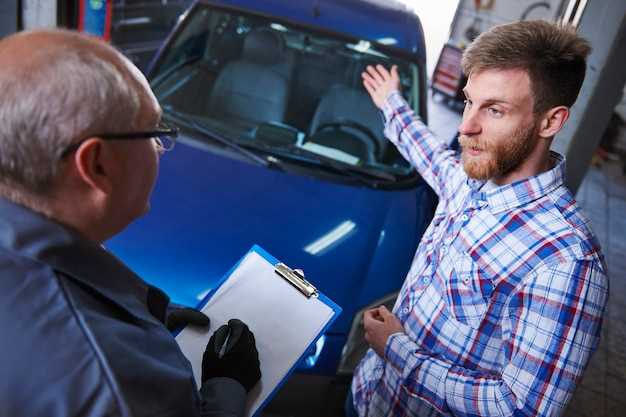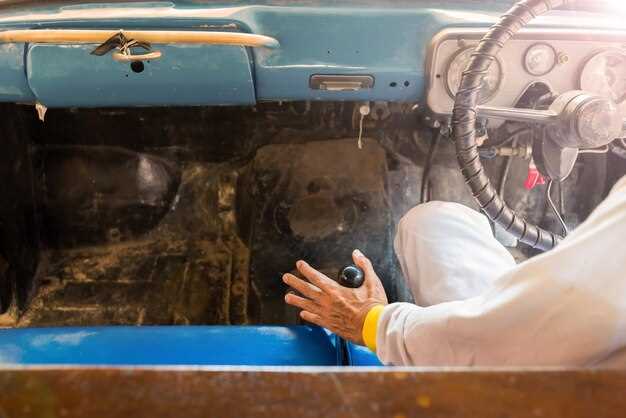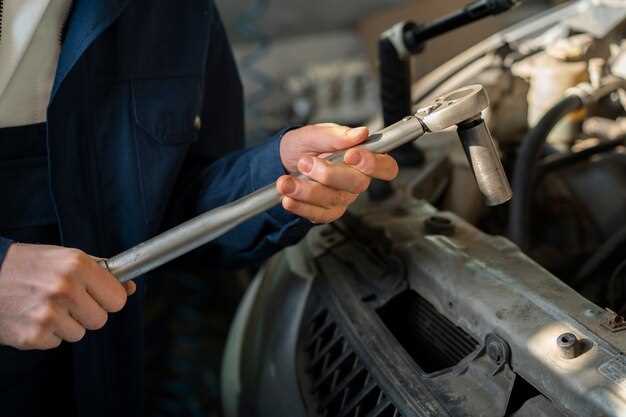
When it comes to evaluating the condition of a classic vehicle, a thorough understanding of its components and overall state is essential. Whether you’re considering a purchase for your collection or planning a restoration project, knowing what to look for can save you time, money, and disappointment.
The first step in assessing a vintage vehicle’s condition is to conduct a comprehensive visual inspection. This involves examining the exterior for rust, paint quality, and body alignment. Pay particular attention to areas where water may accumulate, as these spots are prone to corrosion. Additionally, inspect the undercarriage and frame for any signs of deterioration, as structural integrity is crucial for both safety and value.
Next, dive into the mechanical aspects of the vehicle. Check the engine, transmission, and suspension systems for functionality. A well-maintained engine can make a significant difference in the overall performance and longevity of a classic car. It’s wise to gather documentation about any past restoration work, as this can give insight into the vehicle’s history and potential issues that may arise.
Finally, don’t overlook the interior. The condition of seats, dashboard, and other components can greatly affect the vehicle’s enjoyment and value. Look for wear and tear, as well as any evidence of prior repairs that could influence your restoration plans. By taking the time to thoroughly assess these areas, you’ll be better equipped to make informed decisions regarding your vintage vehicle investment.
Evaluating Body and Frame Integrity in Classic Cars

When assessing the condition of classic vehicles, evaluating the body and frame integrity is crucial for successful restoration. A well-preserved body and sturdy frame are essential indicators of a classic car’s overall health. Begin by checking for any signs of rust, which can severely compromise structural integrity. Common rust spots include fenders, rockers, and around the wheel wells. Surface rust may be manageable, but through-body rust can indicate more severe problems.
Next, inspect the body panels for straightness and consistency. Uneven gaps or alignment issues between panels can signify previous accidents or poor repairs. Use a magnet to detect body filler or bondo, which can mask underlying damage. If the magnet does not stick in certain areas, that could indicate extensive repairs or rust issues that require further investigation.
Pay close attention to the frame, as it provides essential support to the entire vehicle. Look for cracks, bends, or rust on the frame itself. A compromised frame can have serious implications for safety and performance. If available, check for original documentation that outlines any previous repairs done to the frame, as this can give insights into its current condition.
It’s also important to assess the adherence of the original paint and treatment. Paint that is peeling or bubbling may point to hidden rust issues beneath the surface. If restoration is in the cards, understanding the condition of the original bodywork can help plan an authentic restoration process.
Lastly, taking the time to assess the entire vehicle under proper lighting conditions can reveal hidden flaws. A comprehensive evaluation of both the body and frame will provide a clearer picture of the classic car’s condition and help guide restoration efforts effectively.
Understanding the Importance of Mechanical Systems Check
When assessing the condition of a vintage vehicle, a thorough inspection of its mechanical systems is crucial. Classic cars possess unique engineering and components that may not be easily replaceable. Therefore, understanding the state of these systems can significantly impact both the vehicle’s performance and future restoration costs.
Firstly, evaluating the engine’s condition is essential. The heart of any vehicle, the engine’s performance directly affects reliability and drivability. Check for signs of leaks, unusual noises, and overall cleanliness, as these can indicate potential issues. A compression test can provide insights into the engine’s health, revealing whether it still functions as intended or requires extensive repairs.
Next, the transmission plays a vital role in the overall operation of a classic car. Inspect the transmission fluid for color and consistency. Burnt or discolored fluid can signal underlying problems that might necessitate costly repairs or replacements. Ensuring smooth shifting and responsiveness during a test drive can confirm its integrity.
The suspension and braking systems are equally important. A well-maintained suspension ensures a comfortable ride and stability, while the brakes are critical for safety. Look for signs of wear on brake pads and rotors, and test the vehicle’s stopping power. Worn components can turn a dream car into a nightmare if not addressed promptly.
Lastly, don’t overlook electrical systems, which have become increasingly complex over the years. Classic vehicles may feature outdated wiring that can lead to electrical failures. Inspect all gauges, lights, and connections for functionality. A functioning electrical system is vital for both safety and enjoyment on the road.
In conclusion, conducting a comprehensive mechanical systems check during your vintage vehicle inspection is essential for making informed decisions. Protecting your investment and ensuring the longevity of your classic car depends on understanding the condition of these critical systems.
Restoration Best Practices to Preserve Vintage Appeal

Restoration of vintage vehicles requires a careful balance between maintaining original features and incorporating necessary updates to ensure functionality. Begin with a thorough inspection to identify any areas of concern, including rust, structural integrity, and mechanical components. Document all findings as a reference for the restoration process.
When sourcing replacement parts, prioritize original or period-correct components to retain the vehicle’s authenticity. If original parts are unavailable, consider high-quality reproductions that closely match the original design. This approach helps preserve the aesthetic and historical value of the vehicle.
During the restoration process, use methods that minimize damage to existing features. For instance, when repainting, avoid abrasive techniques that could harm original finishes. Instead, use gentle cleaning agents and protective coatings to enhance the vehicle’s appearance without compromising its vintage appeal.
Understand the importance of maintaining proper documentation throughout the restoration. Keep records of all repairs, parts replacements, and services performed. This documentation not only serves as a valuable reference for future maintenance but also enhances the vehicle’s provenance for potential future buyers.
Finally, consider engaging with vintage vehicle clubs or restoration experts who can provide guidance and share best practices. Their insights can be invaluable in ensuring that your restoration efforts yield a vehicle that not only functions well but also embodies the charm and character of its era.




